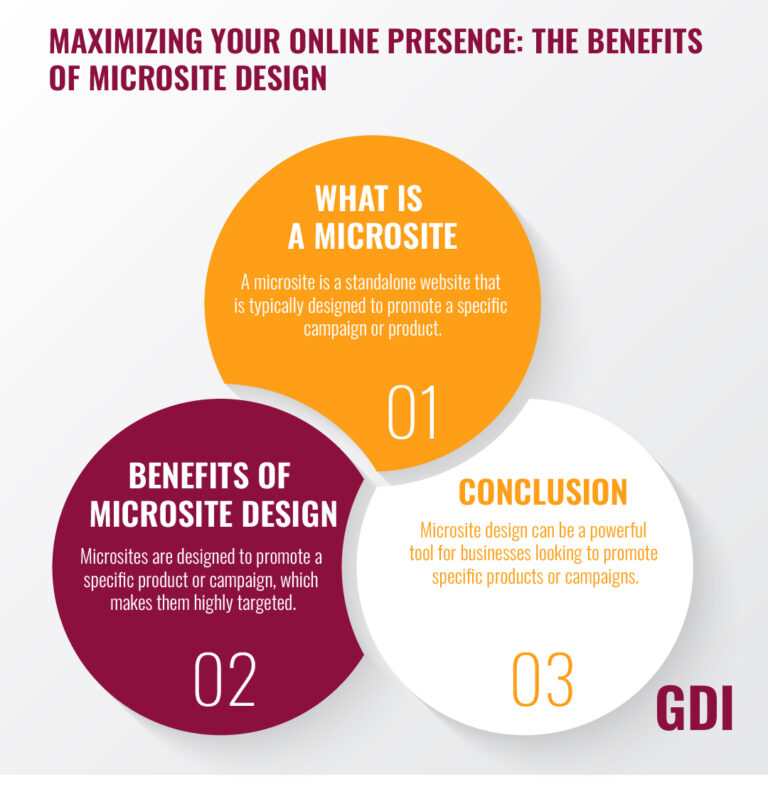Website development and design services have evolved rapidly over the years. With more and more businesses moving online, the importance of having an attractive and user-friendly website has become paramount. One strategy that businesses can use to boost their online presence is by creating a microsite. In this post, we’ll explore the concept of microsite design and how it can benefit your business.
What is a Microsite?
A microsite is a standalone website that is typically designed to promote a specific campaign or product. Unlike a traditional website, microsites are focused on a single goal and have a unique URL that is separate from the main website. Microsites can be used for a variety of purposes, including product launches, events, and seasonal promotions.
Benefits of Microsite Design
- Increased Conversion Rates:
Microsites are designed to promote a specific product or campaign, which makes them highly targeted. By providing visitors with a clear call-to-action, businesses can significantly increase their conversion rates.
- Enhanced User Experience:
Microsites are designed with a specific goal in mind, which makes them highly user-friendly. Visitors can easily navigate the site, find the information they need, and take the desired action.
- Improved SEO:
Microsites can be optimized for specific keywords, which can help improve your search engine rankings. By creating high-quality content that is relevant to your target audience.
- Better Analytics:
Microsites provide businesses with more accurate data on their marketing campaigns. By tracking visitor behavior, businesses can gain valuable insights into what works and what doesn’t.

Best Practices for Microsite Design
- Keep it Simple: Microsites should be easy to navigate and understand. Keep the design simple and focused on the primary goal.
- Consistent Branding: While microsites are standalone sites, they should still be consistent with your overall brand. Use the same color scheme, fonts, and messaging to maintain brand continuity.
- Clear Call-to-Action: Microsites should have a clear call-to-action that encourages visitors to take action. Use bold buttons and clear messaging to make it easy for visitors to convert.
- Mobile Responsive: With more and more people using mobile devices to access the internet, it’s essential that your microsite is mobile responsive. This means that the site should be easy to navigate and read on smaller screens.
Conclusion
Microsite design can be a powerful tool for businesses looking to promote specific products or campaigns. By creating a highly targeted and user-friendly site, businesses can increase their conversion rates, improve their SEO, and gain valuable insights into their marketing campaigns. If you’re interested in creating a microsite for your business, contact GDI Solutions, a leading provider of website development and design services.

Leave a Reply